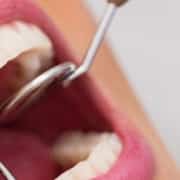3 Ways to Prevent Cavities
Does it seem like you’re always getting cavities? It can be frustrating when you visit your dentist only to discover that you have yet another cavity. It’s not as bad as you think, since having a cavity filled sooner rather than later is better than needing a root canal in Albany, NY down the line, but still, there are some ways to prevent cavities altogether.
1. Visit Your Dentist More Often
For most people, visiting the dentist once every six months is sufficient. But some people are just more prone to cavities and other oral health problems. So if you want to stay on top of the ballgame, why not invest in your teeth and gums by making a habit of visiting the dentist once every three or four months? This will give the dentist a chance to preemptively take care of issues that could cause trouble later on.
2. Up Your Oral Hygiene Game
Take a close look at how you care for your teeth. There’s almost certainly room for improvement. Maybe you should invest in an oral irrigator for starters. These fun little gadgets are great at getting out all the little bits of food debris that get lodged in your teeth.
3. Replace Your Toothbrush More Often
You can also help keep the bacteria that cause cavities out of your mouth by replacing your toothbrush more often. Experts say to replace it once a month, but since they’re easily replaceable, consider replacing yours once every two weeks. You could also invest in an ultrasonic toothbrush cleaner for even more protection against bacteria.
Believe it or now, your Albany, NY dentist doesn’t want you to get cavities, either. The next time you visit us, which we hope is soon, ask about more tips for preventing cavities.








